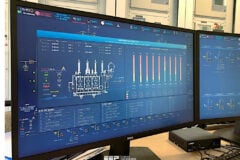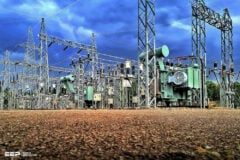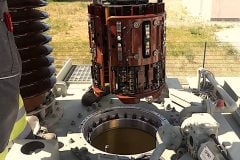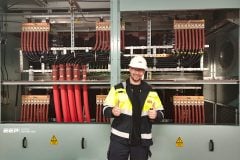https://youtube.com/watch?v=1GTe4iLEu-o%26w%3D624%26h%3D351
Cant see this video? Click here to watch it on Youtube.
Substation transformers can range from the size of a garbage can to the size of a small house; they can be equipped with a wide array of gauges, bushings, and other types of auxiliary equipment. The basic operating concepts, however, are common to all transformers.
An understanding of these basic concepts, along with the application of common sense maintenance practices that apply to other technical fields, will provide the basis for a comprehensive program of inspections, maintenance, and testing. These activities will increase the transformers’s service life and help to make the transformer’s operation both safe and trouble-free.
Heat and contamination are the two greatest enemies to the transformer’s operation. Heat will break down the solid insulation and accelerate the chemical reactions that take place when the oil is contaminated. All transformers require a cooling method and it is important to ensure that the transformer has proper cooling.
Proper cooling usually involves cleaning the cooling surfaces, maximizing ventilation, and monitoring loads to ensure the transformer is not producing excess heat.
Contamination
Contamination is detrimental to the transformer, both inside and out. The importance of basic cleanliness and general housekeeping becomes evident when longterm service life is considered. Dirt build up and grease deposits severely limit the cooling abilities of radiators and tank surfaces. Terminal and insulation surfaces are especially susceptible to dirt and grease build up. Such buildup will usually affect test results.
The transformer’s general condition should be noted during any activity, and every effort should be made to maintain its integrity during all operations.
Transformer Oil
The oil in the transformer should be kept as pure as possible. Dirt and moisture will start chemical reactions in the oil that lower both its electrical strength and its cooling capability. Contamination should be the primary concern any time the transformer must be opened. Most transformer oil is contaminated to some degree before it leaves the refinery.
It is important to determine how contaminated the oil is and how fast it is degenerating. Determining the degree of contamination is accomplished by sampling and analyzing the oil on a regular basis.
Service Life
Although maintenance and work practices are designed to extend the transformer’s life, it is inevitable that the transformer will eventually deteriorate to the point that it fails or must be replaced. Transformer testing allows this aging process to be quantified and tracked, to help predict replacement intervals and avoid failures.
Historical test data is valuable for determining damage to the transformer after a fault or failure has occurred elsewhere in the circuit. By comparing test data taken after the fault to previous test data, damage to the transformer can be determined.











thats very intresting